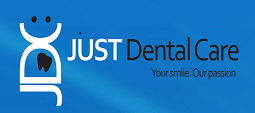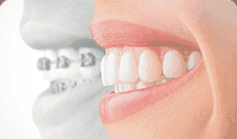Invisalign
Let us get you smiling again with confidence. Use Invisalign
Book your Invisalign assessment now.
Invisalign is an alternative to braces. Your Invisalign treatment consists of a series of nearly invisible, removable aligners that you change every two weeks. Each aligner helps to move your teeth incrementally – little by little, week by week – until they have straightened to the final position prescribed by your dentist.
Why is having straight teeth beneficial?
There are two main reasons for having straight teeth. The first reason is based around beauty and success in life, the second is tooth function and overall health and well being.
According to the American Journal of Orthodontics and Dentofacial Orthopedics, October 2014 vol 146, people with nice straight teeth and an aesthetic smile are considered more intelligent and more likely to get a job compared to those with crooked teeth.
It has been commonly known that attractive people enjoy numerous social benefits because of their beauty. It is also known that the appearance of the smile and teeth are important features in determining the attractiveness of the face.
Having straight teeth can also improve your overall health, because when teeth fit together correctly, they last longer and are less likely to need further dental treatment in the future. Having crooked teeth or misaligned teeth can lead to periodontal issues and excessive and unnecessary stress on teeth. This can lead to premature wear of teeth.
Common types of misalignment include crowding, spacing, deep bite, open bite, excessive overjet, and cross bite.
Teeth that are subject to excessive stress wear more. Teeth are slightly compressive in nature and as a result when placed under undue pressure, chipping and notches can form at the gum line. Furthermore, chipping and fractures of enamel at the edges of teeth can occur, causing teeth to flatten out. As teeth flatten out your occlusal vertical dimension decreases, placing pressure on your jaw muscles and jaw joints, potentially leading to ear aches and head aches and sleep disorders.
Premature wear can also lead to gum recession and bone loss. Crowding can also lead to periodontal concerns because it is harder to clean your teeth.
Why choose Invisalign.
– the clear aligners allow you to have a beautiful smile without people noticing that you are going through treatment.
– you can eat normally, and no food traps. You do not eat with the aligners in your mouth, so you will never get food stuck like with traditional fixed braces
– no ulcers. Unlike traditional wires and brackets, the aligners are smooth, so lips, cheeks and tongues do not get caught or abraided.
– less risk of root resorption. The movements created by Invisalign liners are small and slow. As a result there is less risk of root resorption compared to traditional fixed braces whereby movements can be fast.
– allows you to brush and floss normally.
Is Invisalign for me?
An initial assessment is the best way to see if Invisalign is ideal for you. Dr Michael Leong will conduct a brief suitablity assessment and answer any questions you may have about Invisalign.
At Just Dental Care we will discuss if you are suitable for Invisalign. The main requirements to successful treatment is
1) you will need to wear the aligners for 22hrs a day.
2) a retainer will be required for life to ensure your teeth do not relapse, i.e do not go back to what thy were before treatment.
3) composite buttons will be placed on some teeth during the treatment period.
If you have crooked teeth or dislike your smile, contact us for a free cosmetic consultation.
How much does Invisalign cost?
The cost of Invisalign treatment is usually comparable to the cost of traditional braces. Of course, the final cost will be based on your individual treatment needs. These factors can include the complexity of your case, how long your treatment will take, and your orthodontic insurance coverage.
In Australia, the average cost of Invisalign treatment ranges from $6,000 to $9,000, but if you only need very minor correction, treatment can start from as little as $4,500.
Can my health insurance cover it?
If your health insurance policy has orthodontic coverage, Invisalign should be covered to a similar extent as conventional braces. However, as medical benefits differ slightly from policy to policy, please check with your health fund.

